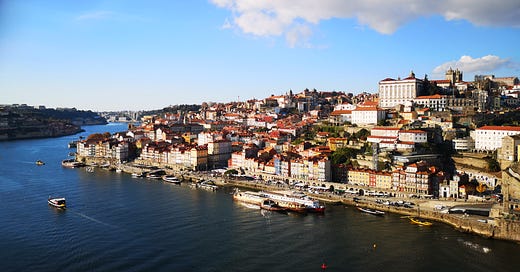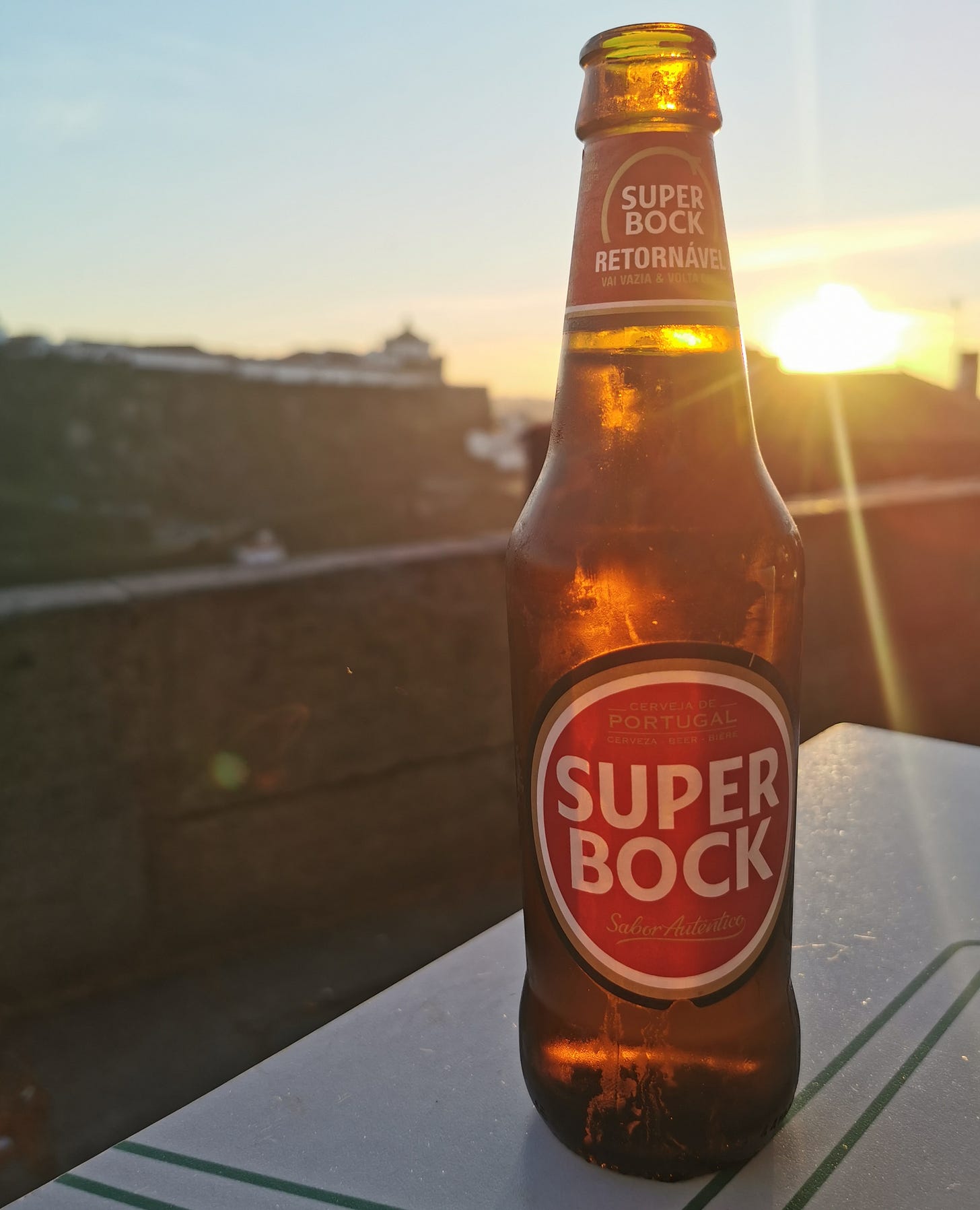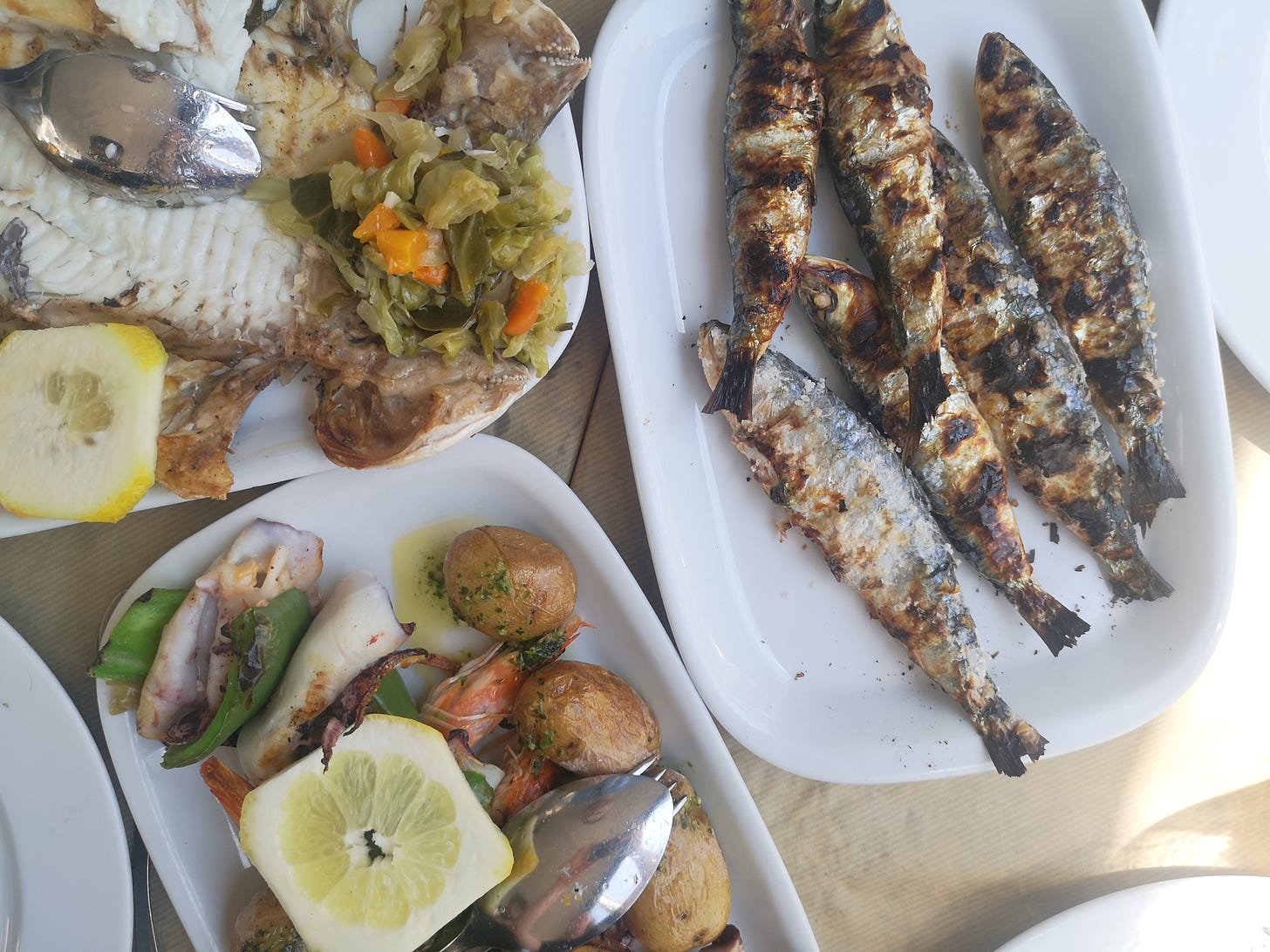Updated May 2025.
There are a lot of food and drink articles out there about Porto, my adopted home town. Its tourism has exploded in recent years and with it, every SEO-hungry travel blogger is either writing about it or YouTubing it.
That’s great, but the information is patchy. You could come here expecting that every street corner has an amazing eatery or bar when, in fact, Porto is still very much an up-and-coming sort of town.
It’s getting there — there is incredible food and drink here.
And I want to give my two cents as a food and wine writer living in the heart of the city.
So here it is. A bumper-sized guide to my adopted home town Porto, Portugal.
I do not call my guide the “definitive.” There is no such thing because every writer has their own agenda, opinions and motives for writing. But what it is, is my definitive guide. My personal favourite places.
This is a big article so:
1) If you’re reading it as an email, the guide will probably be cut off. It’s best to read this in the Substack app or in a web browser.
2) You’ll find a contents list below with links to help you navigate (usable on the app or in a browser only).
Finally, I’ve split the guide into two parts. The first is free for everyone.
The second is for paid subscribers only. I’ve included personal recommendations (including who to ask for behind the counter of the establishment) that I wanted to give as a thank you to my incredible paid supporters.
Paid subscribers will also get access to every recommendation on a bespoke Google Map which you can save and use if you ever come this way (which naturally, I highly recommend).
If you want access to the whole thing it’s $5 a month or $50 a year. For that you’ll the whole of this guide (and future in-the-works guides) as well as everything The Sauce has to offer.
Recipes, wine advice, food essays, it’s all in there.
You can also read the post by making the most of your single-use unlock which you’ll see once the paywall hits.
Contents
Free to read:
Paid subscribers only:
A note on Portuense gastronomy
I don’t think anyone comes away from Porto thinking wow, their food is so elegant.
No. This is the land of bread and pork and cheese and piri-piri
It’s comfort — not cutting edge — food. And for that, I am grateful. There is nothing like a Bifana on a rainy day (it rains a lot here).
If you’re here to try the local food, order these:
The Bifana — thin slices of pork simmered in white wine, garlic, spices, herbs and oil, stuffed into bread rolls and liberally doused in spicy piri-piri sauce. I dream about these.
The Cachorro — A Porto speciality, a Cachorro (or its diminutive Cachorrinho) is a hot dog filled with at least two types of sausage, cheese and spicy sauce.
Caldo Verde — cabbage soup. Good for preventing scurvy.
The roast pork sandwich — known as a “sande de pernil”
The Prego no Pão — A small rare-cooked steak in a bread roll.
The Francesinha — as many meats as you can think of piled between two pieces of bread, covered in melted cheese and beer sauce, topped with an egg.
Arroz de Pato — duck rice, not dissimilar to a paella.
Arroz de tomate — Tomato rice
Sardinhas — Sardines. The original Portuguese street food roasted over coals.
Bacalhau — Salt cod and probably Portugal’s most famous dish. Best in pataniscas (which I’ll come to later) and rissoís.
The rissol — a small deep-fried croquette filled with anything from suckling pig (leitão) to bacalhau to chicken.
Much of this traditional fare can be found in tascas (pronounced tash-kas) — traditional local eateries. These are actually where a lot of YouTube and SEO content gets it right — some of the most famous tascas are the best in town.
If you really have to try the Francesinha…
Skip the tourist-filled Cafe Santiago and go to A Regaleira instead. It’s been in the same family since the 1930s and is where the original Francesinha was created.
Superbock vs. Sagres beer
Portugal’s generic lager splits roughly down the middle of the country. To the south, it’s all about Sagres, named after the small Algarve town. In the north, you won’t find a jot of that.
Here, it’s all about Superbock.
You’ll find Superbock in every bar, restaurant and shop in the city. It all tastes fine. Y’know, generic lager-like. Great on a hot day. And always cheap.
Similar to Spain, you don’t order just “a beer”, you order it by the size you want:
Fino (normally 20cl)
Principe (normally 35cl)
Rei (normally 40cl)
Caneca (normally 50cl)
The craft beer revolution has arrived in Porto
And you’ll find the best of it in three bars:
Catraio
For ages, I couldn’t figure out why everyone I know loves Catraio. From the street, it looks like a small non-descript bar.
Then I discovered the garden.
You can’t see this secret from the front, you have to go out the back, up a few flights of incredibly steep steps, past the coal-fired BBQs slinging out great street food, and into a beautiful two-tiered garden sitting almost at roof level.
There’s also a bar up there so you don’t have to go back downstairs for some of the best craft beer in the city.
View on Google / Follow on Instagram
Letraria
Letraria is Porto’s resident craft brewery with two locations. One in the Bomfim district — also with a garden I had no idea about (Porto is filled with green spaces hidden behind houses and commercial establishments) — and one in the Cedofeita district.
Good beer and decent food designed to mop up the alcohol.
View on Google / Follow on Instagram
Armazém da Cerveja
Located close to Bolhão market is Armazém da Cerveja which honestly, I don’t visit often but always enjoy when I do.
View on Google / Follow on Instagram
What about the coffee?
General coffee can be found everywhere for around €1 but if speciality is your vibe, Porto is your place.
A friend of mine who lives in Libson recently commented how much better Porto is for speciality coffee than the capital, which is saying something.
Because there are so many places, my tip (if you’ll excuse the little plug) is to download my husband Sam’s speciality coffee app Kava.
Kava has two purposes. One is to offer speciality coffee recommendations (curated by both me and Sam) and somewhere you can post photos and ratings of the coffees you drink in said establishments.
It’s not just restricted to Porto either, we’ve both worked hard at creating a comprehensive map for most of Europe (and an increasing number in the US too).
Tips for the best grilled fish
There is only one tip. Go to Matosinhos. Then go to Rua Heróis de França. This street is lined with restaurants cooking fresh fish over coal.
Most of them are good, some are excellent. These are ones I’ve either been to or are recommended by trusted sources:
O Gaveto — I ate the best seafood rice of my life here. Incredible food and a good wine list too. View on Google / Follow on Instagram
Casa Serrão — very good seabass, sardines and squid. View on Google / Follow on Instagram
O Lusitano — an everyday kind of place with excellent quality fish. View on Google
O Senhor do Padrão — an institution. Amazing sardines. View on Google
Tasca Life
Tascas are a way of life in Portugal.
They are the sort of places tour agents like to call “authentic.” Tascas are often housed in old, hole-in-the-wall-style establishments filled with old dudes propping up the bar drinking Superbock, watching TV and ordering soup, bifanas and cachorros.
If you don’t know any Portuguese, they can be a little scary to enter but happily, the Portuense (the name for Porto locals) are a pretty friendly bunch so you shouldn’t have much trouble.
Most of the old-school tascas are well on Porto’s tourist map but make no mistake, they are not tourist traps. At least not the ones I visit. My favourites are:
Conga
Famous for two things: bifanas and quail. Both are drenched in an unholy amount of piri-piri oil and the bifana is still the best I’ve found in the city.
Keep reading with a 7-day free trial
Subscribe to The Sauce to keep reading this post and get 7 days of free access to the full post archives.







